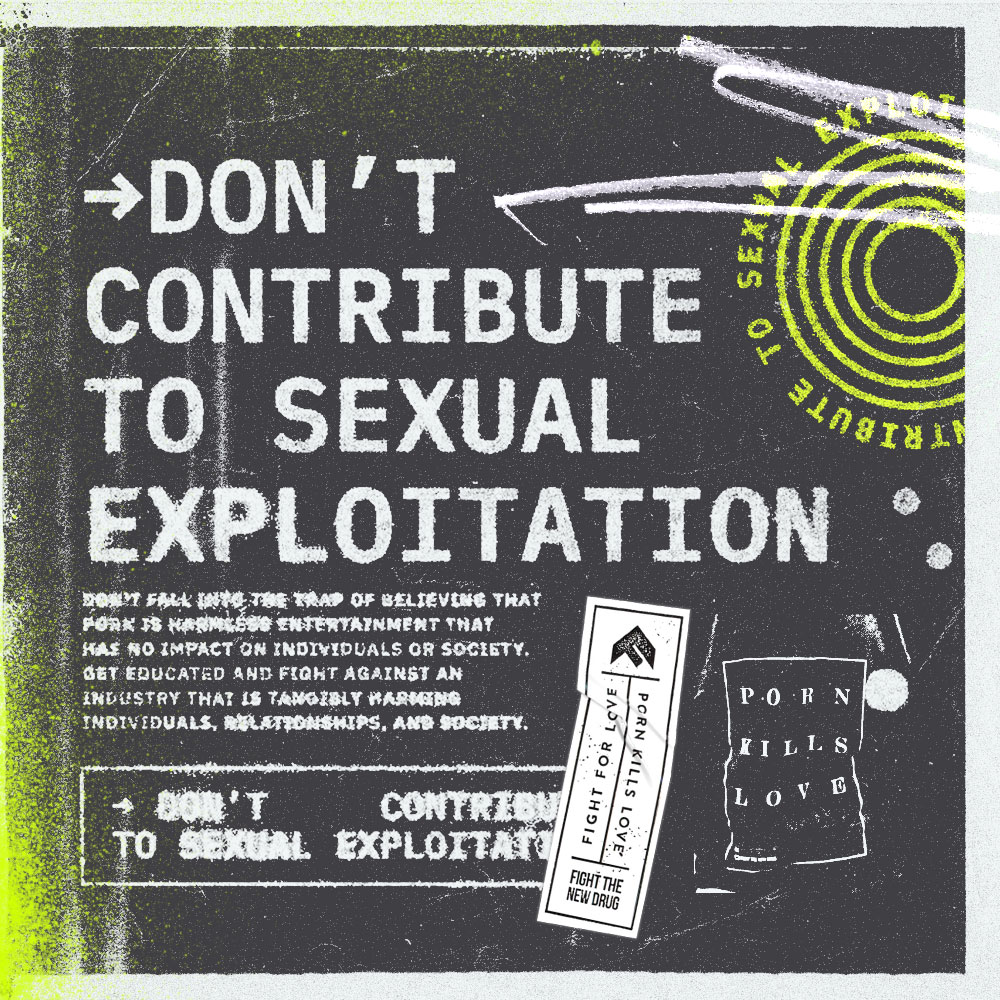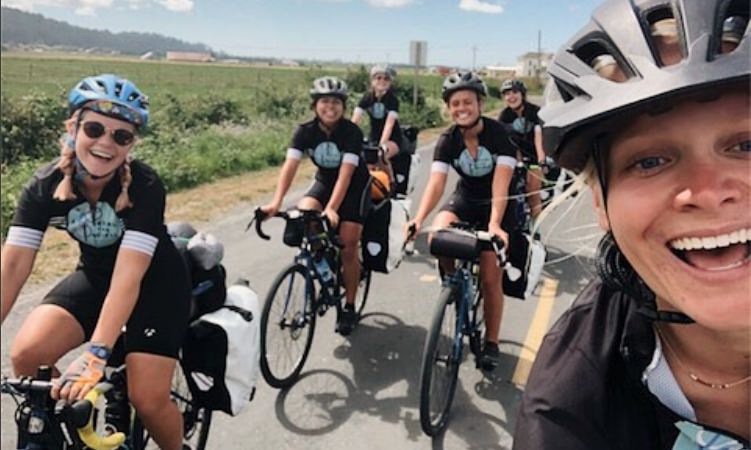Human trafficking is one of the more urgent issues our society is dealing with. Against a tide of exploitation and stories of millions of girls, boys, men, and women taken from their homes and sold for sex, it can feel like a helpless and hopeless issue to try and tackle.
But one group of 10 women are doing something about it by investing their time and cardio skills to travel over 1,700 miles to raise awareness and funds to fight child sex trafficking. Meet the 2019 Pedal the Pacific team:
Pedal the Pacific
Every year, Pedal the Pacific takes a diverse group of college-aged women from all over the United States and gathers them for an annual bike trip from Seattle to San Diego. Biking the equivalent of almost two marathons a day—about 50 miles—these women traveled from their different universities in Texas, Arkansas, Oklahoma to the start of their route in Seattle to spark conversations and raise funds for a trafficking survivor refuge and rehabilitation center.
Check out the 2018 team in this NowThis video:
Last summer, the 2018 team raised nearly $150,000 for The Refuge Ranch, a rehabilitation center for trafficked girls that broke ground in October 2016 and was just opened last year.
This year, they’ve raised an incredible $258,341 so far for the restoration center—absolutely crushing last year’s total which was $147,000.
According to the Pedal the Pacific site, “The Refuge Ranch will be a long-term healing ranch for young girls ages 11-19 who have been rescued from sex trafficking here in the United States. Each girl will have her own plan of restoration, which will include on-site schooling through a University of Texas Charter School, therapeutic programs that include equine, art, music and pet therapy, along with one on one counseling and group therapy with licensed professional therapists. At capacity, it will house 48 girls, which will be the largest facility of its kind in the nation. By supporting The Refuge for DMST (Domestic Minor Sex Trafficking), we hope others will recognize that sex trafficking occurs within their own communities and empower them to seek their own opportunities to get involved locally… The funds raised during Pedal the Pacific will literally be poured into the walls where these survivors will find healing and restoration.”
Incredible, right? Here’s the 2019 team on their final day in San Diego:
These girls are more than amazing! Their donations are open until the end of August, and they’re aiming to raise even more, so check out their site if you want to support their mission.
The reality of sex trafficking in the United States
According to the Polaris Project, a leading anti-trafficking organization based out of the U.S., trafficking happened in every single state in the U.S. last year.
According to one of their latest reports, 8,759 cases of human trafficking were reported to the National Human Trafficking Hotline and BeFree Textline—a 13% increase in cases compared to 2016—bringing the total number of cases reported to 40,987 since the Hotline’s creation in 2007. Over 6,000 of the cases reported last year were sex trafficking-related.
Related: What Most People Get Wrong About The Case Of Cyntoia Brown
From their 2017 report, let’s dive into a few significant numbers and information, all of which you can read for yourself by clicking here:
-The number of human trafficking cases reported jumped by 13%, with a 29% increase in individual survivors that were identified through reports and tips.
-The average age survivors reported that their sexual exploitation started was 19. Over 500 survivors reported being exploited when they were under 18.
-7,255 victimized individuals were involved with 6,244 sex trafficking cases.
What does this have to do with porn?
You may be asking yourself, isn’t Fight the New Drug an anti-porn, pro-love, pro-sex awareness and education organization? Why are they talking about sex trafficking, then?
Great question, we’re so glad you asked!
Obviously, human trafficking is an underground business, making firm statistics hard to come by. But the facts in cases that come to light are chilling. For example, in 2011, two Miami men were found guilty of spending five years luring women into a human trafficking trap. They would advertise modeling roles, then when women came to try out, they would drug them, kidnap them, rape them, videotape the violence, and sell it to pornography stores and businesses across the country. Not to mention that a very popular Japanese porn company was busted last year for forcing dozens of unsuspecting women into shooting porn. They advertised the porn shoots as modeling opportunities, made the models sign complicated contracts, and then blackmailed these women, forcing them into degrading and abusive shoots. One woman was even forced to perform in over 100 pornographic movies. How is that acceptable?
Here is the reality of how trafficking fuels porn, as stated by Dr. Karen Countryman-Roswurm:
“…Pornography is the material means of sexual exploitation. Pornography is the proof, the very evidence that commercial sexual exploitation occurred. Pornography is verification of violence. And pornography is used again and again to prime, promote, and perpetuate the perpetration of boys and girls for the purpose of sex trafficking.”
We fight to bring awareness to the fact that porn isn’t harmless entertainment, and the porn industry wouldn’t be where it is today without sex trafficking and exploitation. Now that you know, will you join us in raising awareness?

Your Support Matters Now More Than Ever
Most kids today are exposed to porn by the age of 12. By the time they’re teenagers, 75% of boys and 70% of girls have already viewed itRobb, M.B., & Mann, S. (2023). Teens and pornography. San Francisco, CA: Common Sense.Copy —often before they’ve had a single healthy conversation about it.
Even more concerning: over half of boys and nearly 40% of girls believe porn is a realistic depiction of sexMartellozzo, E., Monaghan, A., Adler, J. R., Davidson, J., Leyva, R., & Horvath, M. A. H. (2016). “I wasn’t sure it was normal to watch it”: A quantitative and qualitative examination of the impact of online pornography on the values, attitudes, beliefs and behaviours of children and young people. Middlesex University, NSPCC, & Office of the Children’s Commissioner.Copy . And among teens who have seen porn, more than 79% of teens use it to learn how to have sexRobb, M.B., & Mann, S. (2023). Teens and pornography. San Francisco, CA: Common Sense.Copy . That means millions of young people are getting sex ed from violent, degrading content, which becomes their baseline understanding of intimacy. Out of the most popular porn, 33%-88% of videos contain physical aggression and nonconsensual violence-related themesFritz, N., Malic, V., Paul, B., & Zhou, Y. (2020). A descriptive analysis of the types, targets, and relative frequency of aggression in mainstream pornography. Archives of Sexual Behavior, 49(8), 3041-3053. doi:10.1007/s10508-020-01773-0Copy Bridges et al., 2010, “Aggression and Sexual Behavior in Best-Selling Pornography Videos: A Content Analysis,” Violence Against Women.Copy .
From increasing rates of loneliness, depression, and self-doubt, to distorted views of sex, reduced relationship satisfaction, and riskier sexual behavior among teens, porn is impacting individuals, relationships, and society worldwideFight the New Drug. (2024, May). Get the Facts (Series of web articles). Fight the New Drug.Copy .
This is why Fight the New Drug exists—but we can’t do it without you.
Your donation directly fuels the creation of new educational resources, including our awareness-raising videos, podcasts, research-driven articles, engaging school presentations, and digital tools that reach youth where they are: online and in school. It equips individuals, parents, educators, and youth with trustworthy resources to start the conversation.
Will you join us? We’re grateful for whatever you can give—but a recurring donation makes the biggest difference. Every dollar directly supports our vital work, and every individual we reach decreases sexual exploitation. Let’s fight for real love:



